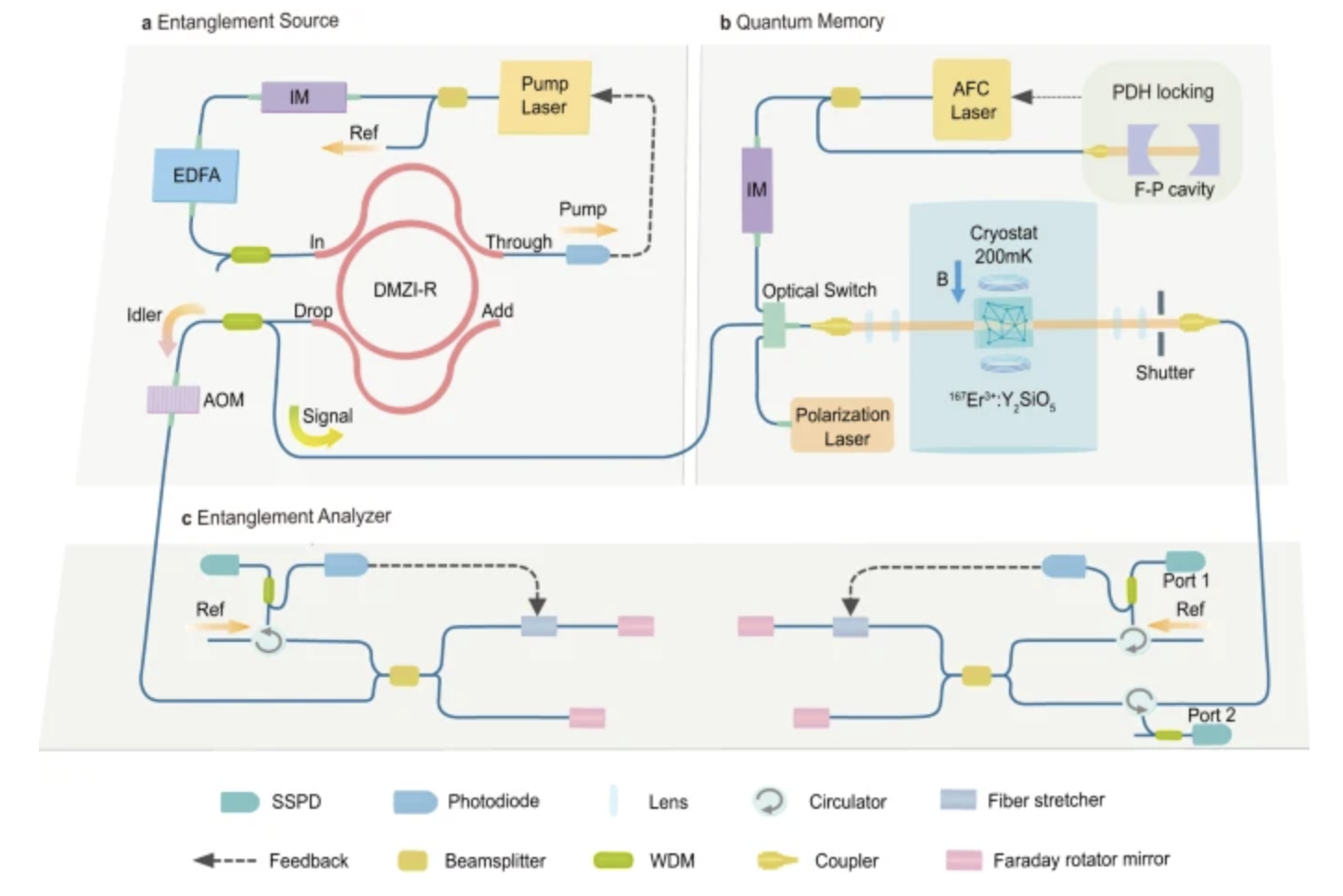Insider Brief
- Nanjing University scientists have successfully demonstrated the storage and retrieval of entangled photons using 167Er3+ ions.
- The researchers write in Nature Communications that the work is another step toward the development of a global quantum internet.
- The team also points toward the technological challenges that need to be sorted out before the achievement of a quantum internet.
- Image: Nanjing University/Nature Communications: Quantum storage of entangled photons at telecom wavelengths in a crystal
In a quantum communication technology advance, scientists at Nanjing University have successfully demonstrated the storage and retrieval of entangled photons using 167Er3+ ions, a step that could bring the world closer to realizing a global quantum internet.
Quantum networks would offer unprecedented levels of security and computational power, according to the researchers.
The study, published in Nature Communications, reports the use of 167Er3+ ions embedded in a crystal to store entangled photons—essential elements in quantum computing and secure communications—for 1.936 microseconds, a duration more than 387 times longer than previous attempts. This work was achieved by leveraging the naturally narrow linewidth of entangled photons and the long storage time offered by the ions.

“First, we show the storage of entangled photons in 167Er3+: Y2SiO5, a quantum memory at telecom wavelength, which is a promising candidate for realizing an efficient, long storage time and broadband quantum memory,” the research team states, underscoring the potential of this approach in enhancing quantum memory systems.
The success of this experiment hinges on two key advancements. The first is the storage of entangled photons at telecom wavelengths, compatible with current fiber networks, in a solid-state device. The second is the integration of quantum memory with an entangled photon-pair source on a photonic chip, which is not only CMOS compatible but also suitable for scalable fabrication.
Security and Power
If a practical quantum internet could be achieved, communications would take a leap forward in security and computational power, the researchers report.
“The quantum internet—in synergy with the internet that we use today—promises an enabling platform for next-generation information processing, including exponentially speed-up distributed computation, secure communication, and high-precision metrology,” the researchers write.
More Work Needed
However, the team acknowledges that there is more work to do. They suggest that to enhance storage efficiency, future work could refine the atomic-frequency comb (AFC) parameters and employ more sophisticated initialization protocols that take advantage of the ions’ hyperfine structure. Moreover, integrating nanostructures could boost light-matter interactions, further extending the potential of 167Er3+ ions in quantum memory applications.
The study also points out that the complex level structure of 167Er3+ ions, while presenting challenges in optical pumping and coherent control pulse sequences, may also open new avenues for quantum engineering of photon-atom interactions.
Despite the technical complexities, the research represents a leap forward in quantum memory technology. The team is optimistic that with further experimental enhancements, 167Er3+ ions combined with integrated quantum photonics could become a robust platform for high-performance quantum memory systems. And that could pave the way for large-scale quantum networks.
The research team included: Ming-Hao Jiang, Wenyi Xue, Qian He, Yu-Yang An, Xiaodong Zheng, Wen-Jie Xu, Yu-Bo Xie, Yanqing Lu, Shining Zhu and Xiao-Song Ma.
If you found this article to be informative, you can explore more current quantum news here, exclusives, interviews, and podcasts.


















